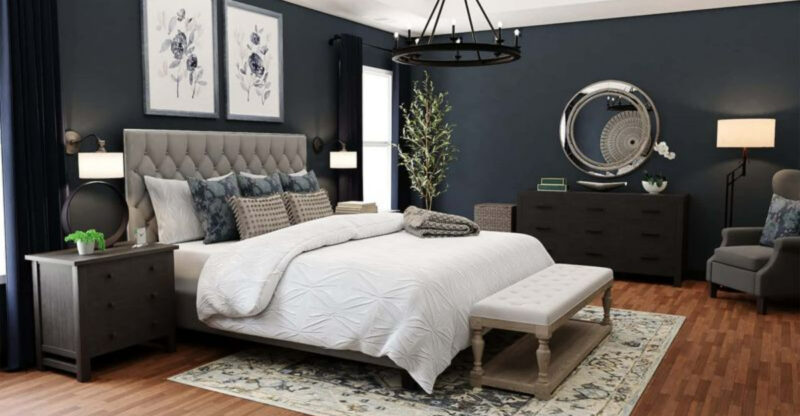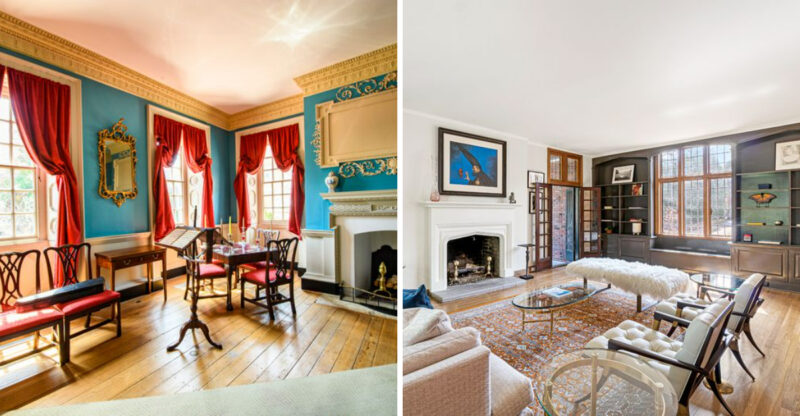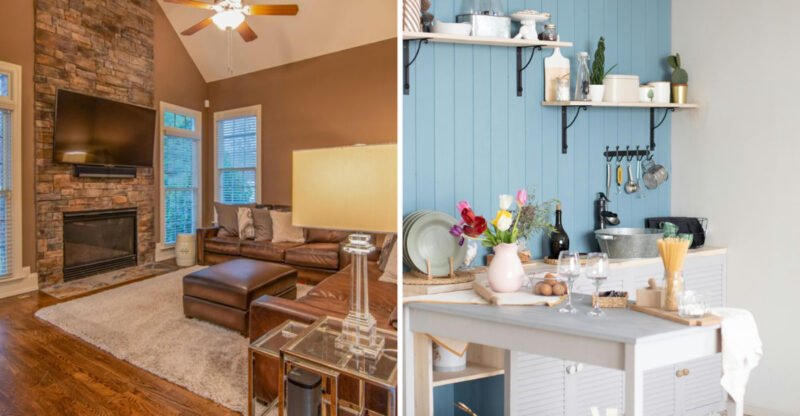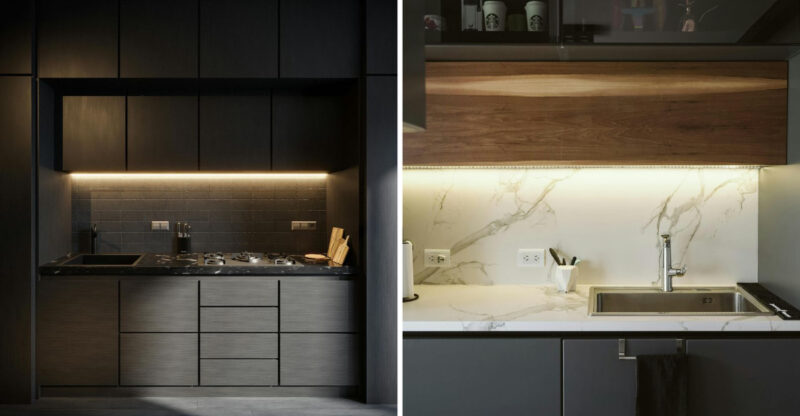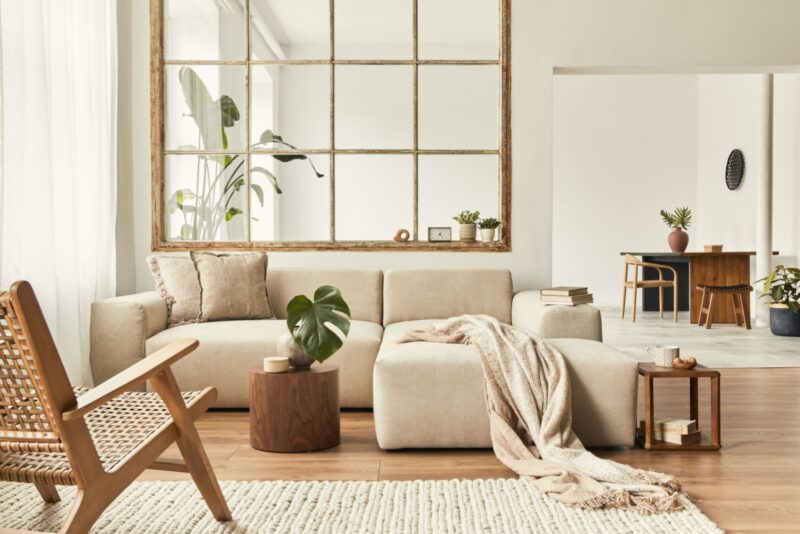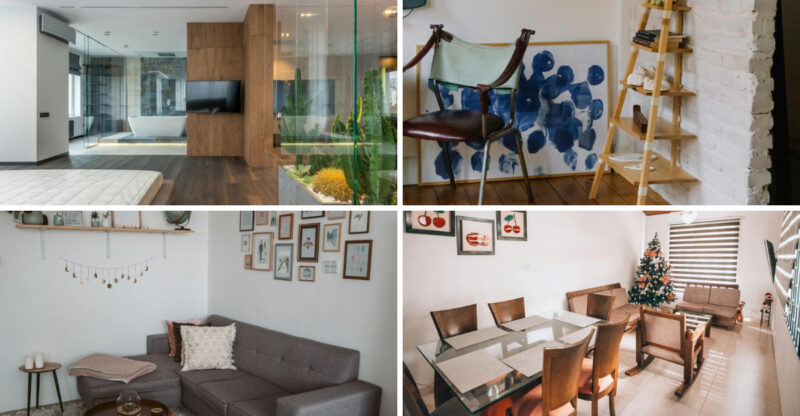Make Your Small Living Room Shine 12 Styling Ideas For More Space And Style
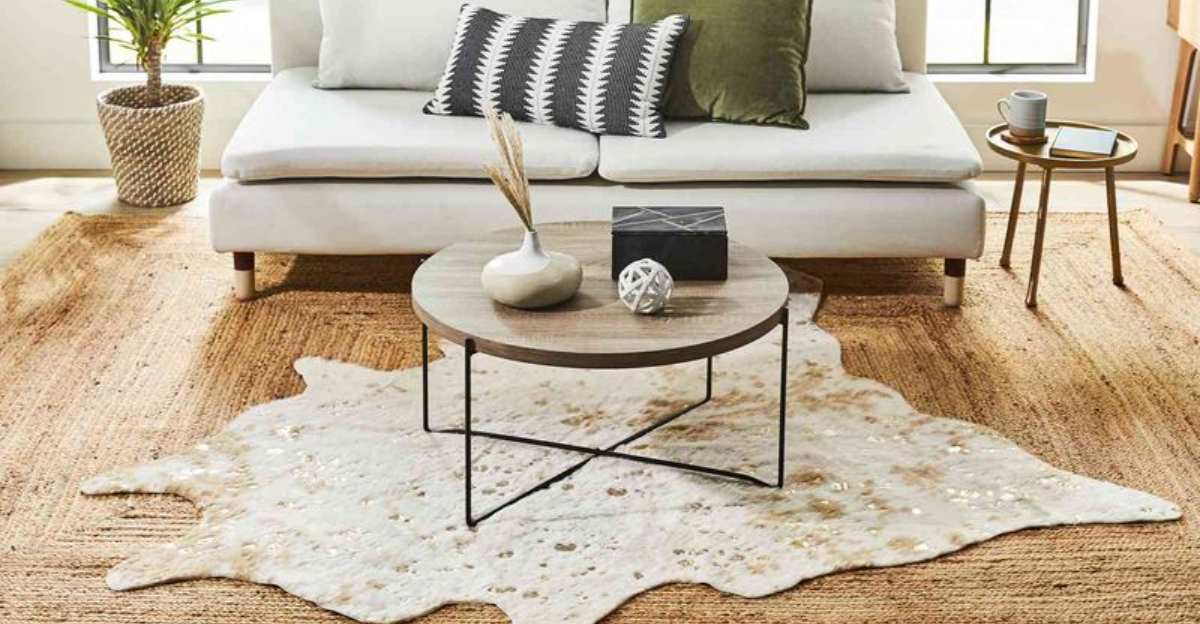
Small living rooms can feel cramped and cluttered without the right design approach. Transforming a tiny space into a comfortable, stylish area is all about smart choices and visual tricks.
I’ve gathered 12 fantastic ideas to help you maximize both space and style in your compact living area.
These tips will make your small living room feel bigger, brighter, and much more inviting!
1. Use Light, Neutral Wall Colors
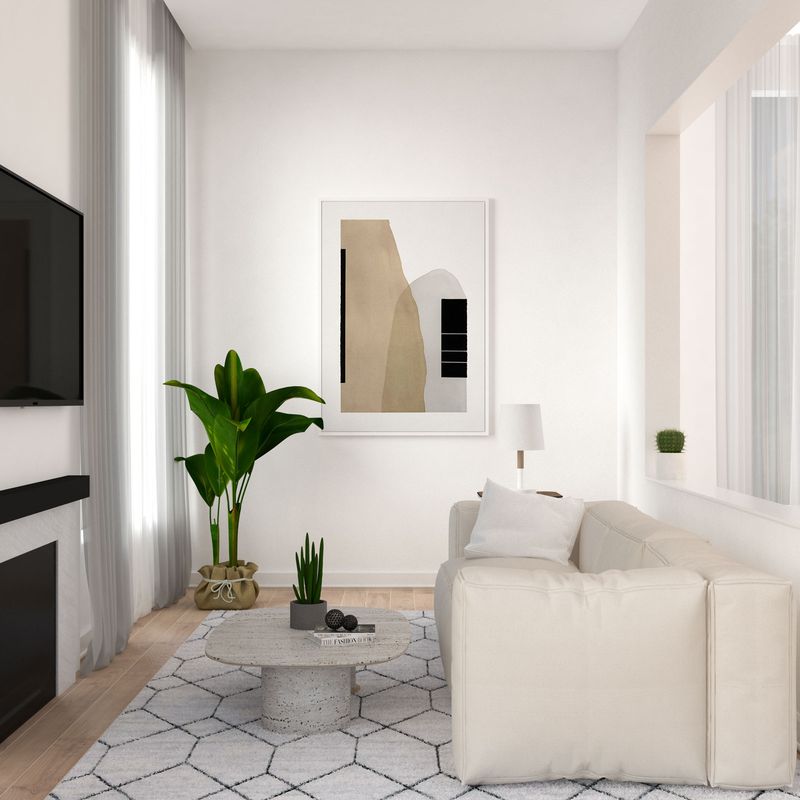
Painting your walls in soft whites, creams, or pale grays instantly creates an airy, open feeling in a small living room. Light colors reflect more natural light, making the space feel significantly larger than it actually is.
I’ve seen dramatic transformations just from switching dark walls to lighter shades. The visual expansion is remarkable! Remember to extend this light color to your ceiling too it removes that visual ‘cut-off’ and makes your ceiling appear higher.
For a bit of personality without sacrificing spaciousness, try adding just one accent wall in a slightly deeper shade or incorporating color through accessories instead of permanent fixtures.
2. Choose Furniture with Slim Profiles
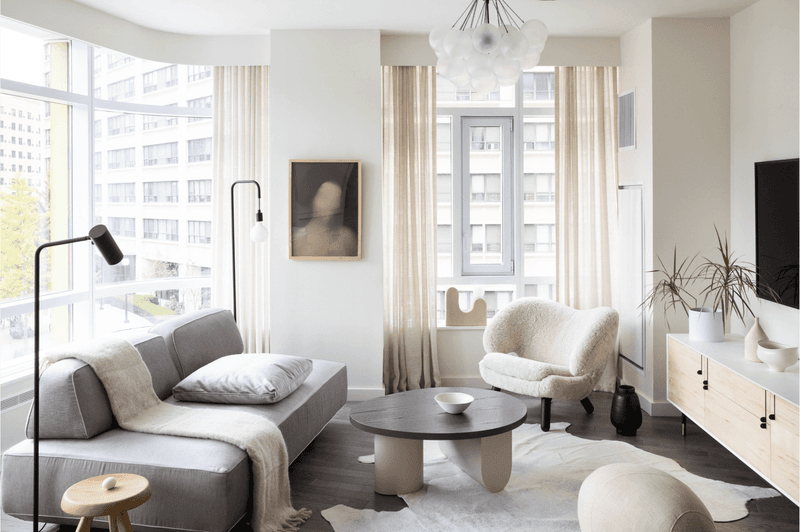
Bulky sofas and oversized chairs eat up precious floor space and make navigation difficult. Instead, look for furniture with thin legs and visible space underneath – these pieces appear to float, creating an illusion of more room.
Mid-century modern designs work wonderfully in small spaces because of their sleek, streamlined proportions. When shopping, measure your room carefully and bring those dimensions with you. Even a few extra inches of clearance around furniture pieces can make a significant difference in how spacious your room feels.
If possible, select a sofa with a shallower depth than standard models – you’ll save valuable square footage while still maintaining comfort.
3. Add Mirrors to Reflect Light and Space
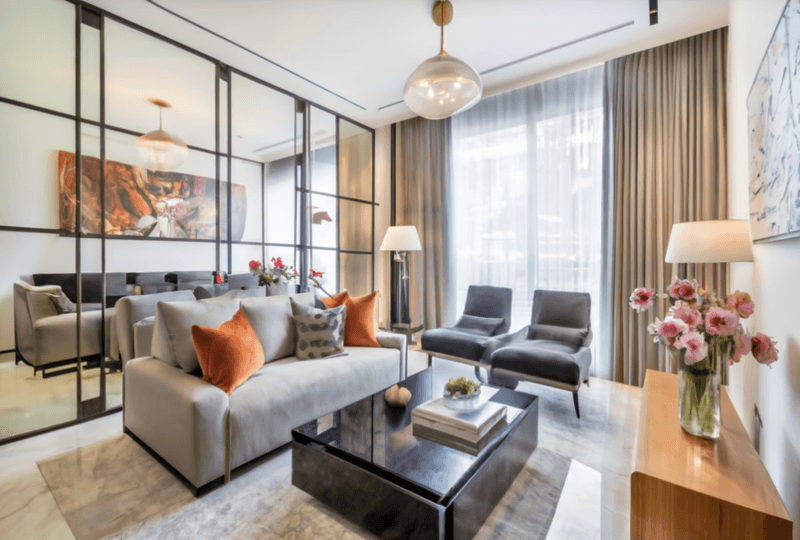
Mirrors are magical in small rooms! Hanging a large mirror opposite your brightest window doubles the natural light and creates a window-like effect that visually expands your walls. This simple trick can completely transform how spacious your living area feels.
For maximum impact, try a floor-to-ceiling mirror or group several smaller mirrors together as a gallery wall. The reflective quality not only bounces light around but also creates the illusion that your room continues beyond its physical boundaries.
Where you place your mirror matters too. Positioning it to reflect an attractive view or an interesting decor element adds depth and dimension to your space while highlighting your best features.
4. Opt for Multi-Functional Furniture
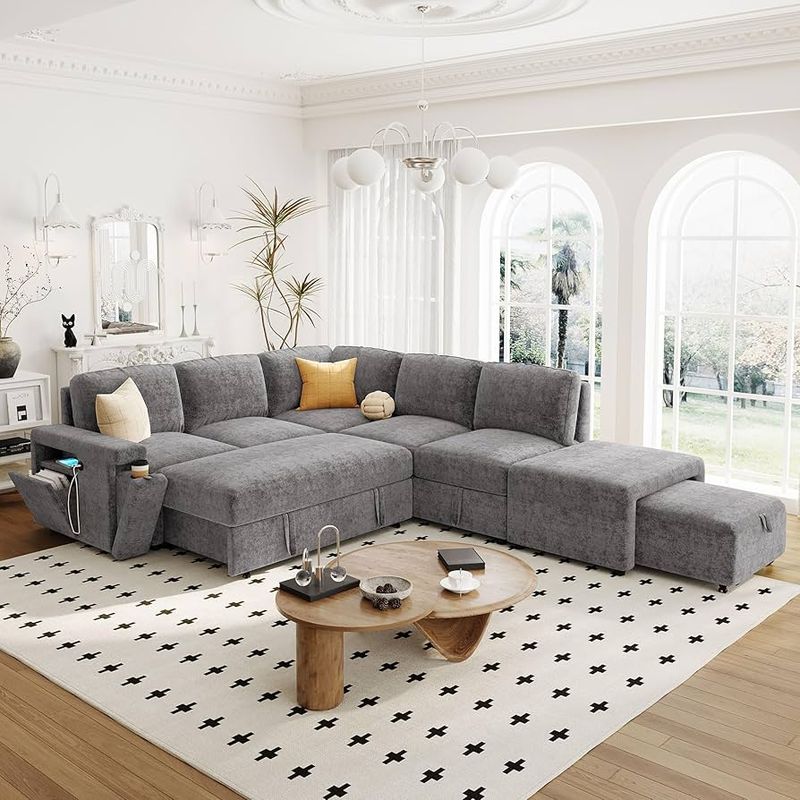
Smart furniture choices can revolutionize a small living room. Storage ottomans that serve as coffee tables, seating, and hidden storage are absolute game-changers for compact spaces. When every inch counts, dual-purpose pieces earn their keep!
Expandable or nesting tables offer flexibility for entertaining yet tuck away when not needed. Consider a sleeper sofa if you occasionally host overnight guests – no dedicated guest room required. Folding or stacking chairs stored in a closet provide extra seating for gatherings without permanently occupying floor space.
My favorite multi-functional piece? A storage bench under a window that offers seating, storage, and a lovely focal point all in one compact footprint.
5. Keep Window Treatments Minimal
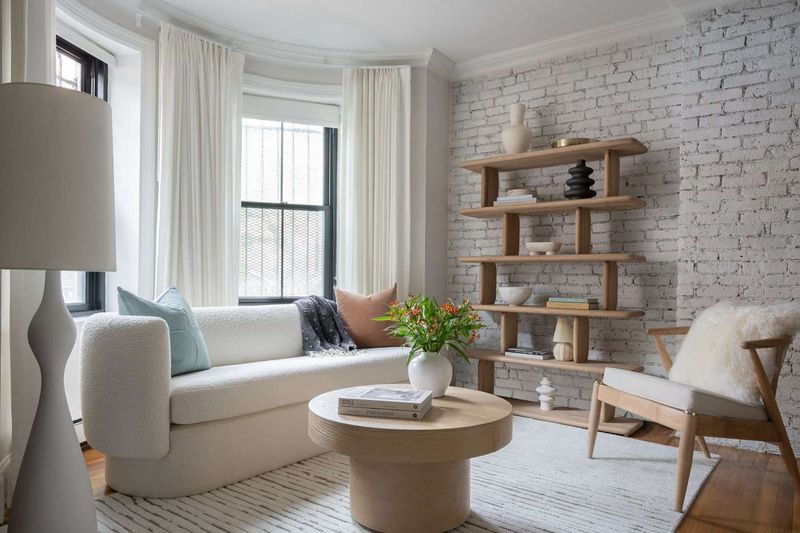
Heavy drapes and elaborate window coverings can overwhelm a small space and block precious natural light. Streamlined window treatments mounted close to the ceiling create an airy feeling while making your windows appear taller.
Simple roller shades, light-filtering blinds, or sheer curtains provide privacy without sacrificing brightness. If you prefer curtains, hang them high and wide extending the rod several inches beyond the window frame on each side creates the illusion of larger windows.
For the most spacious feel, match your window treatments to your wall color. This blended approach prevents visual breaks that can make a room feel chopped up and smaller than it actually is.
6. Incorporate Vertical Storage Solutions
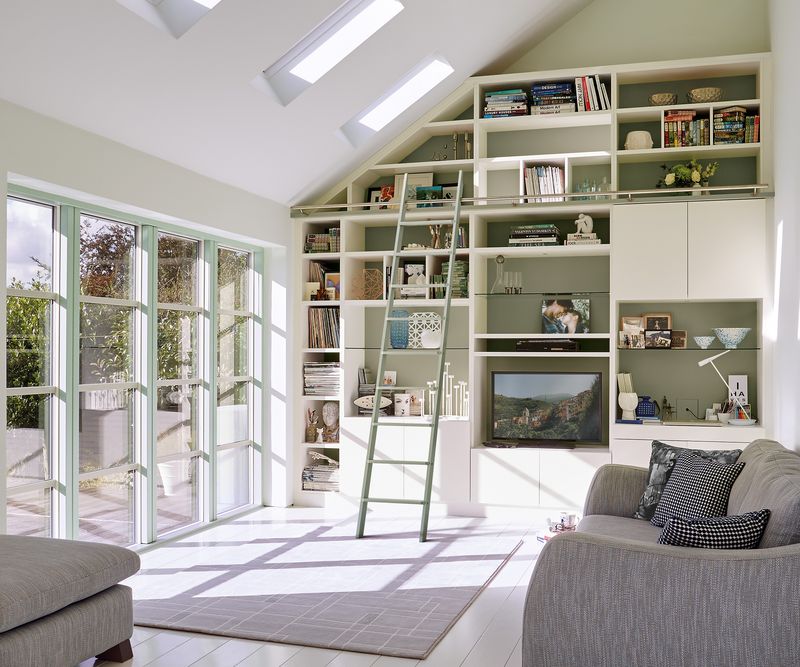
When floor space is limited, the walls become your best friends! Floating shelves, tall bookcases, and wall-mounted cabinets draw the eye upward while providing essential storage without consuming precious floor area. This vertical thinking maximizes every available inch.
Floor-to-ceiling built-ins create a custom look that feels intentional rather than cramped. The continuous line from floor to ceiling actually makes your room appear taller. For a lighter look, mix open shelving with closed storage to display decorative items while hiding clutter.
Don’t forget about the space above doorways and windows – these often-overlooked areas are perfect for additional shelving or display space in tight quarters.
7. Float Furniture Away from Walls
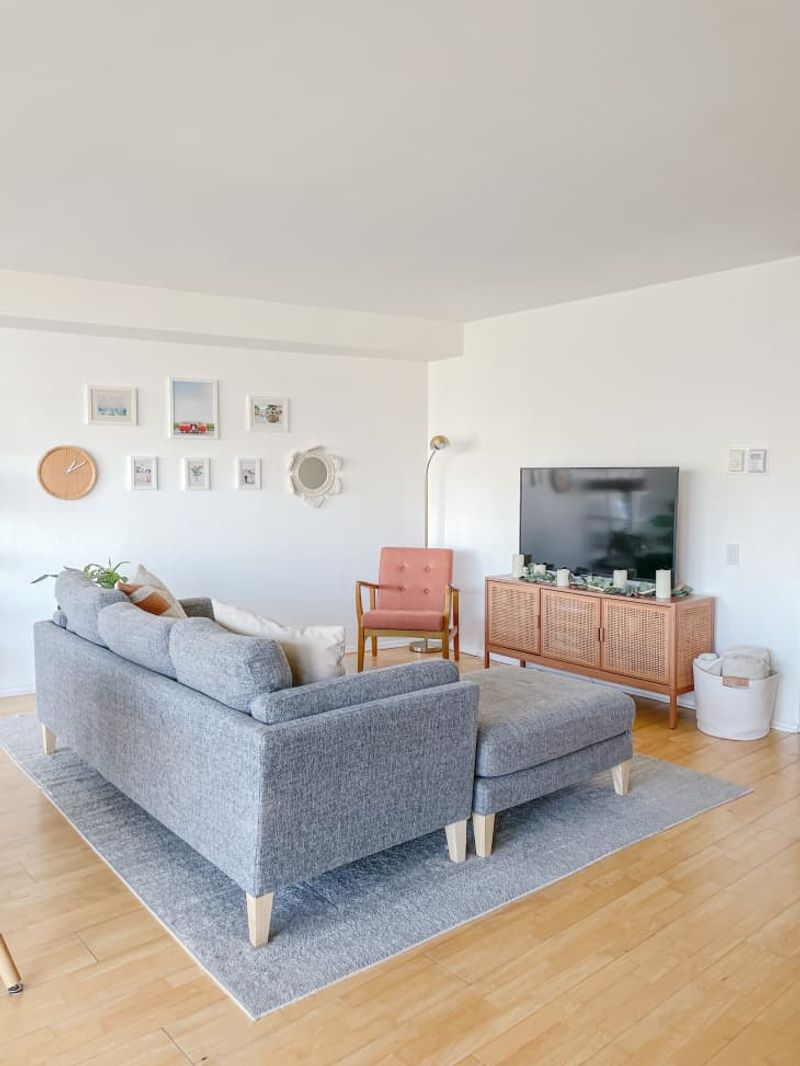
Contrary to popular belief, pushing all furniture against the walls doesn’t always maximize space! Floating your sofa even a few inches from the wall creates breathing room that makes your living area feel less cramped and more intentionally designed.
This technique works especially well with a thoughtfully sized area rug that defines your conversation zone. The small gap between furniture and walls creates visual flow, preventing that boxed-in feeling that can make small rooms feel claustrophobic.
If your room allows, try positioning your sofa perpendicular to the longest wall rather than parallel to it. This unexpected arrangement can create a more dynamic traffic pattern and might better utilize your specific floor plan.
8. Use Glass or Lucite Tables
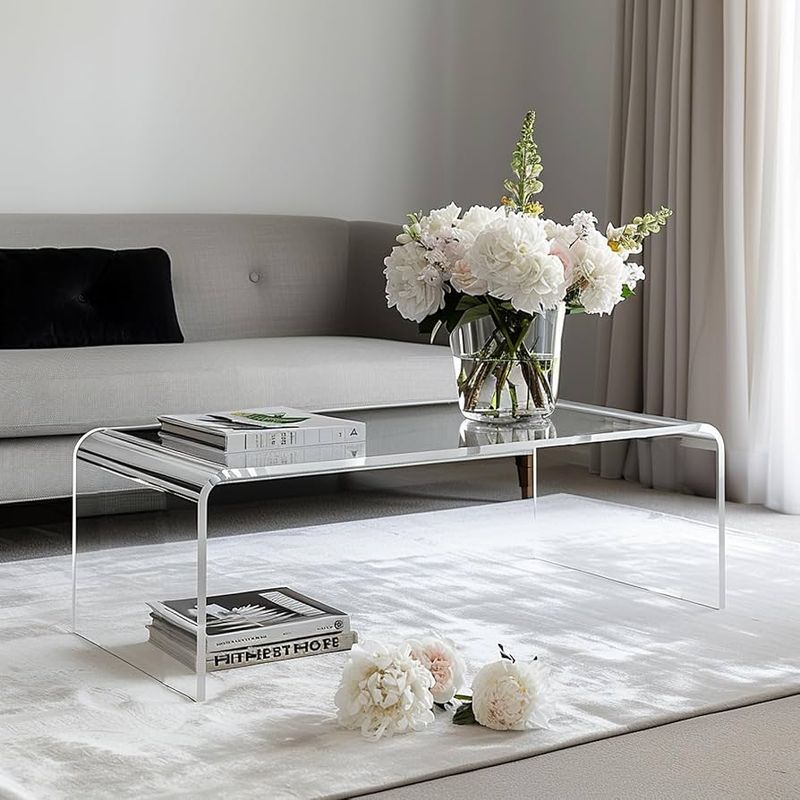
Solid, heavy coffee tables can visually weigh down a small space. Glass or clear acrylic tables perform the same function without the visual bulk, allowing your eye to travel through them to the floor beyond. The transparency creates an almost magical effect of furniture that’s there but not there!
These see-through pieces are particularly effective when placed on light-colored rugs or attractive flooring that deserves to be showcased. Beyond coffee tables, consider clear side tables, console tables, or even dining furniture if your living area serves multiple purposes.
An added bonus? These materials are incredibly easy to clean and maintain, making them practical choices for busy households where functionality matters as much as style.
9. Keep Color Palette Cohesive
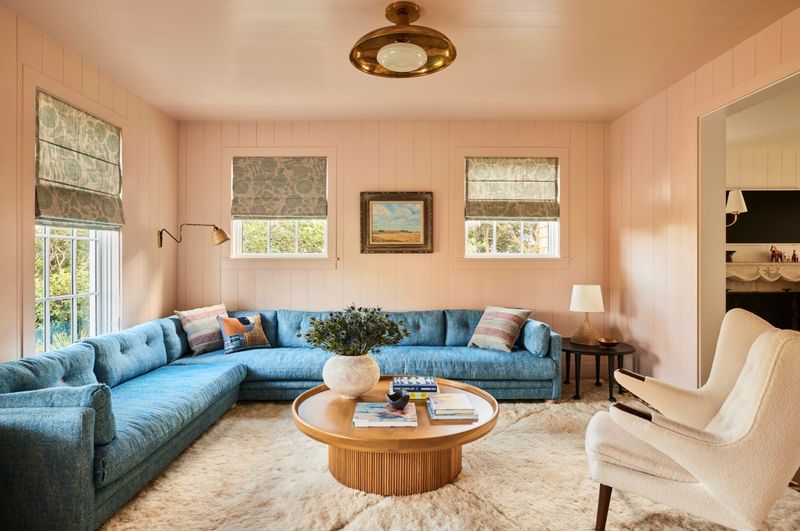
A jumble of competing colors can make a small space feel chaotic and smaller than it actually is. Selecting a limited palette of 2-3 complementary colors creates visual harmony that allows the eye to move smoothly throughout the room without jarring interruptions.
Monochromatic schemes (variations of a single color) are particularly effective in creating a sense of expansiveness. Try different shades and textures of the same color family for depth without discord. When introducing accent colors, use them consistently throughout the space in small doses – perhaps in throw pillows, artwork, and a vase.
Don’t forget that wood tones count as colors too! Limit yourself to one or two wood finishes to maintain that cohesive, thoughtfully designed look.
10. Layer Rugs for Added Texture
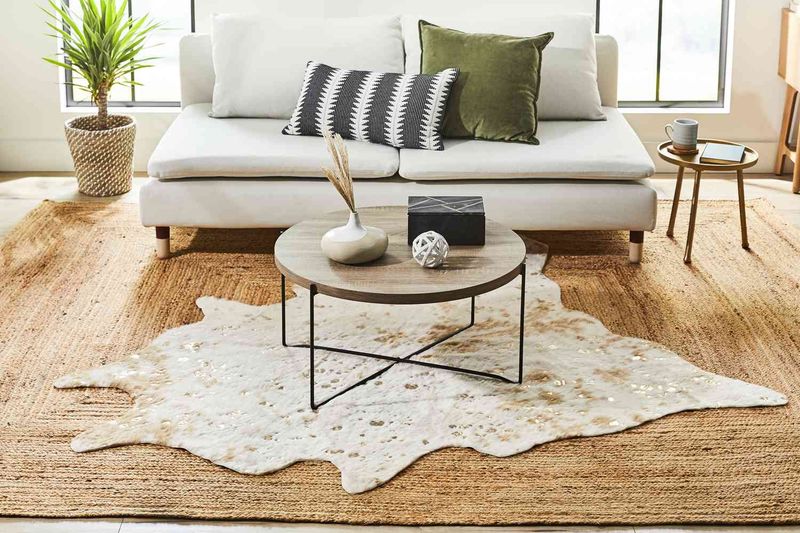
Layering rugs might seem counterintuitive in a small space, but this designer trick adds incredible dimension without requiring extra square footage. Start with a larger, simple base rug like a natural fiber sisal or jute, then top it with a smaller, more colorful or patterned piece.
This technique defines your seating area while adding warmth and personality to your room. The layered effect creates visual interest that draws attention away from the room’s size limitations. It’s also a budget-friendly way to incorporate an expensive smaller rug you love without having to purchase a large, pricey version.
For best results, ensure the bottom layer extends beyond the furniture edges while the top layer sits comfortably within your seating arrangement.
11. Declutter and Edit Accessories
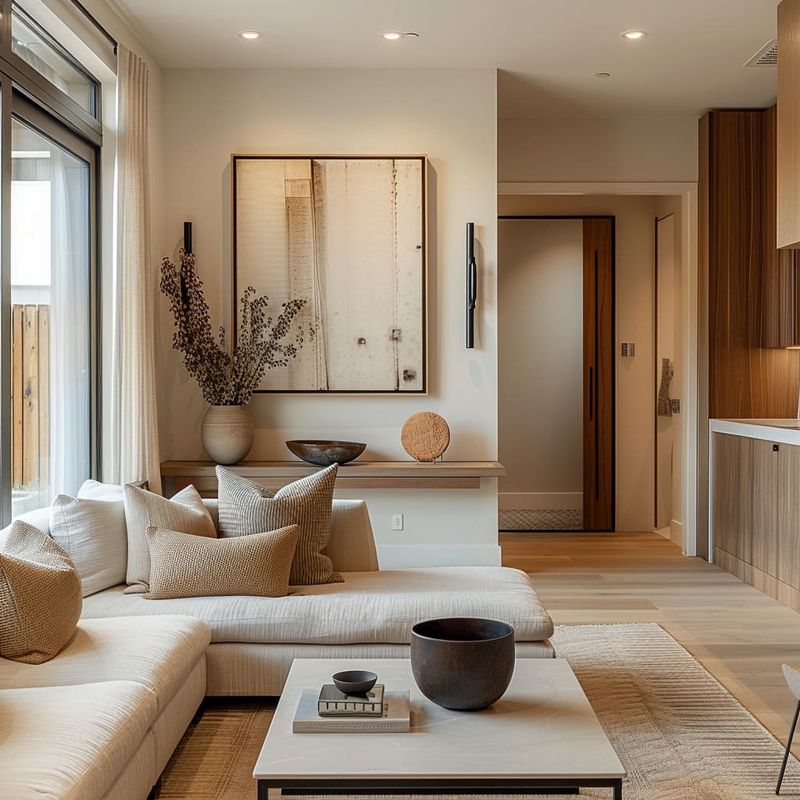
Nothing makes a small space feel more cramped than too many objects competing for attention. Ruthlessly editing your accessories creates breathing room that allows your carefully chosen pieces to shine. Remember: in small spaces, less truly is more!
Rather than displaying many small items, select fewer, larger statement pieces that make an impact without creating visual noise. Group similar objects together rather than scattering them throughout the room this creates purposeful vignettes rather than random clutter.
Adopt the designer’s rule of odd numbers when arranging accessories: groups of three or five items generally look more balanced and intentional than even-numbered groupings. And always leave some empty space for the eye to rest.
12. Highlight a Single Focal Point
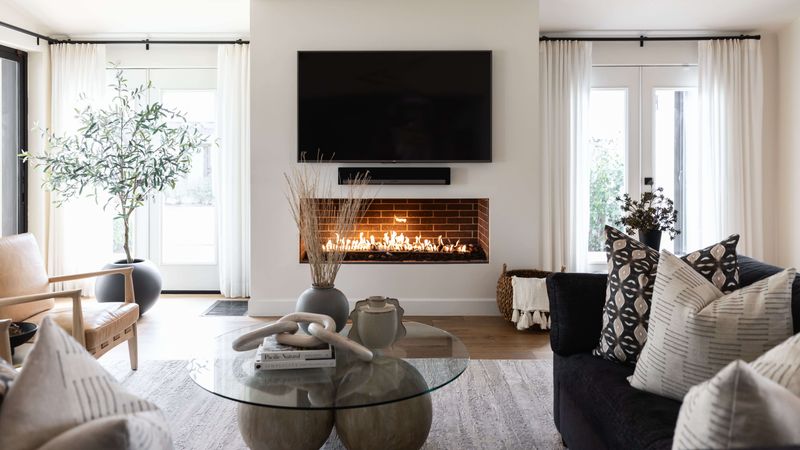
Too many competing elements in a small room create visual chaos. Selecting one standout feature – whether it’s a stunning fireplace, a bold piece of artwork, or a statement light fixture gives the eye somewhere to land and creates a sense of purpose in your space.
Arrange your furniture to emphasize this focal point, making it the natural center of attention. Keep surrounding elements simpler and more subdued to prevent competition. This concentrated visual interest actually makes your room feel more spacious because it provides organization and hierarchy to the design.
If your room lacks an architectural focal point, create one! A gallery wall, a dramatic paint treatment, or even a beautifully styled bookcase can serve as your room’s visual anchor.

